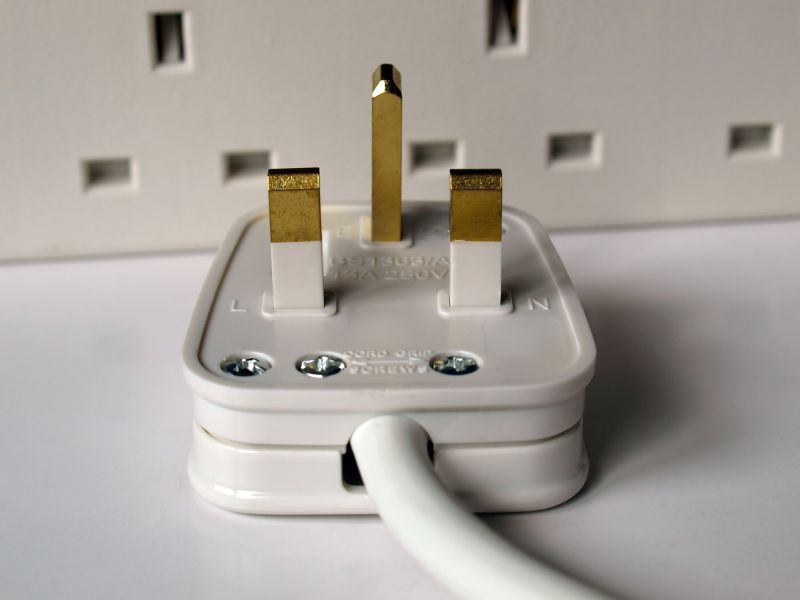
What is PAT Testing?
PAT testing, or Portable Appliance Testing, refers to the examination of electrical appliances and equipment to ensure they are safe to use. This process involves a combination of visual inspections and electronic tests. Although the term ‘PAT Testing’ is commonly used, it’s technically a bit redundant — ‘Portable Appliance Testing testing’ — but the acronym has stuck.
This blog explores the meaning, legal context, requirements, and frequency of PAT testing, particularly in the UK. We’ll also look at who can carry it out, the difference between PAT and fixed installation testing, and how to stay compliant.
What Does PAT Testing Involve?
PAT testing typically includes:
- Visual inspections to identify signs of damage or wear, such as frayed wires, loose plugs, or exposed metal.
- Electrical testing using a PAT tester device to check for issues like earth continuity, insulation resistance, and proper polarity.
- Labelling each item tested, often with a sticker indicating the test date and whether the item passed or failed.
- Documentation for recordkeeping and evidence of compliance.
Testing should include all Class I and Class II equipment that is powered via a standard UK plug — such as kettles, computers, extension leads, power tools, and some industrial machinery.
PAT Testing Frequencies
While many organisations opt for annual PAT testing as a standard practice, it’s important to note that not all equipment requires testing at this frequency. The necessity and interval for PAT testing should be determined based on a risk assessment that considers the type of equipment, its usage, and the environment in which it operates.
Examples of Suggested Testing Frequencies:
- Construction Equipment:
- 110V tools: Visual inspection before each use; formal inspection monthly; combined inspection and testing every 3 months.
- 230V tools: Visual inspection before each use; formal inspection weekly; combined inspection and testing monthly.
- Office Equipment:
- Desktop computers, photocopiers, fax machines (Class I): Visual inspection every 2–4 years; combined inspection and testing up to every 5 years.
- Double insulated equipment (Class II) like fans and table lamps: Visual inspection every 2–4 years; combined inspection and testing not typically required.
- Hand-Held Equipment:
- Double insulated (Class II) items such as some floor cleaners and kitchen appliances: Visual inspection every 6 months to 1 year; combined inspection and testing not typically required.
- Earthed (Class I) items like electric kettles and some floor cleaners: Visual inspection every 6 months to 1 year; combined inspection and testing every 1–2 years.
- Cables, Leads, and Extension Leads:
- Visual inspection every 6 months to 4 years, depending on usage; combined inspection and testing every 1–5 years.
These suggested intervals are initial guidelines and should be adjusted based on the results of previous inspections and tests. If equipment is found to be consistently safe, intervals may be extended; conversely, if issues are frequently identified, more frequent inspections may be necessary.
For detailed guidance, refer to HSE’s INDG236: Maintaining portable electric equipment in low-risk environments and HSG107: Maintaining portable electrical equipment.
Is PAT Testing a Legal Requirement?
Strictly speaking, no — PAT testing itself is not a legal requirement. However, employers, landlords, building owners, and duty holders are legally required to ensure that electrical equipment is safe to use.
This obligation stems from several key regulations:
- Electricity at Work Regulations 1989 (EAWR) – places a duty to ensure electrical equipment is maintained in a safe condition.
- Provision and Use of Work Equipment Regulations 1998 (PUWER) – requires that equipment provided for use at work is safe.
- Regulatory Reform (Fire Safety) Order 2005 – includes duties to prevent fire risks, which can include unsafe electrical appliances.
So, while PAT testing isn’t named explicitly in the legislation, it is one of the most practical and accepted ways of demonstrating compliance with these legal requirements. Without regular inspection or testing, it’s difficult to prove equipment is safe.
PAT Testing vs. Electrical Condition Reports
It’s important to distinguish between PAT testing and an Electrical Installation Condition Report (EICR):
- PAT Testing covers portable appliances with a plug, like kettles, computers, and power tools.
- EICRs cover the fixed wiring of a building – circuits, sockets, distribution boards, etc.
Some equipment may fall into a grey area — such as hardwired appliances (e.g. a wall-mounted heater wired into a fused spur) — which aren’t strictly “portable” but still present a risk if not inspected. These are not typically covered by PAT testing or EICRs and can easily be overlooked.
Who Can Carry Out PAT Testing?
PAT testing must be done by a competent person — someone with the knowledge and training to carry out both the visual and electronic testing.
In practice, this often means:
- Having completed a PAT testing course (e.g. City & Guilds 2377)
- Understanding how to use a PAT tester safely and accurately
- Being able to interpret test results and understand the risks involved
The equipment itself must also be calibrated and maintained regularly.
Need Help Finding a PAT Tester?
If you’re looking for a qualified PAT tester, we can help. Find qualified PAT testers in your area or submit your enquiry via our Facilities Management form.
Frequently Asked Questions (FAQ)
Q: Is PAT testing required by law?
A: No — PAT testing isn’t named specifically in UK law, but there is a legal obligation to maintain safe electrical appliances. PAT testing is one of the easiest ways to demonstrate this compliance.
Q: How often should PAT testing be done?
A: It depends on the type of equipment and how it’s used. For example, construction equipment may need testing every 3 months, whereas a desktop computer in an office may only need testing every 2–5 years. Refer to HSE guidance for detailed recommendations.
Q: What’s the difference between PAT testing and an EICR?
A: PAT testing applies to appliances with a plug. EICRs deal with the fixed wiring of a property. Both are important for ensuring electrical safety.
Q: Can I do PAT testing myself?
A: Yes, if you are competent and trained — ideally having completed a formal qualification and know how to use a PAT tester properly.
Q: Do landlords need to do PAT testing?
A: There is no legal requirement to PAT test, but landlords do have a duty to provide safe electrical equipment. PAT testing is a good way to evidence that.
Let us know if you’d like support with PAT testing — we’ll connect you with qualified professionals through our Facilities Management Enquiries page.



